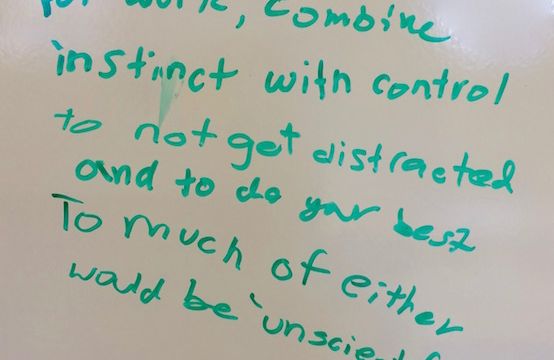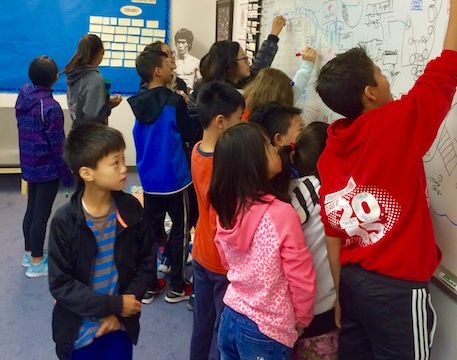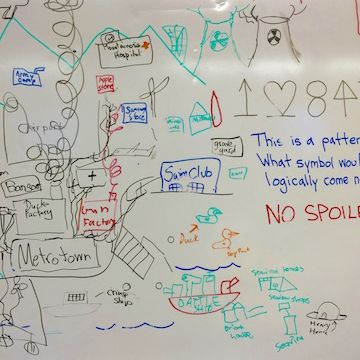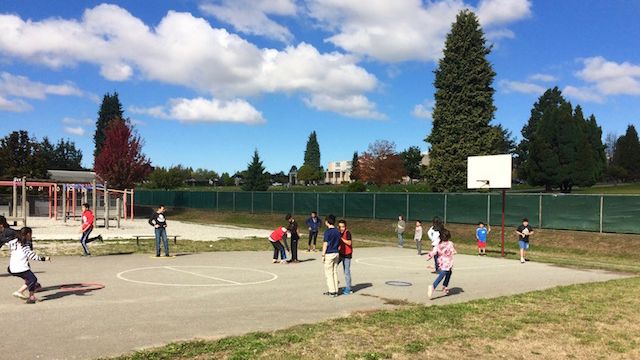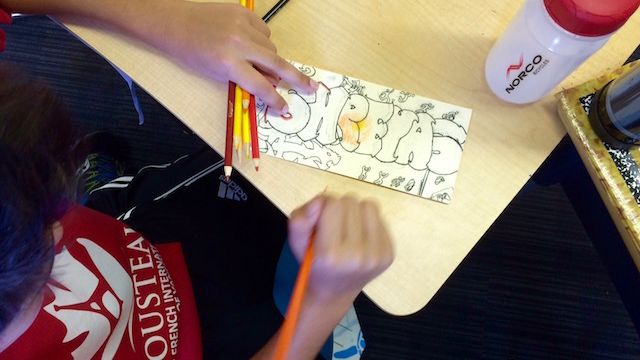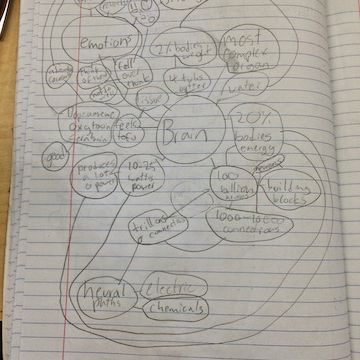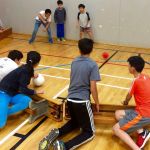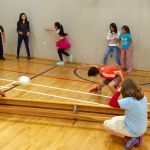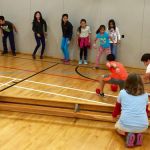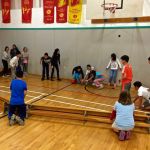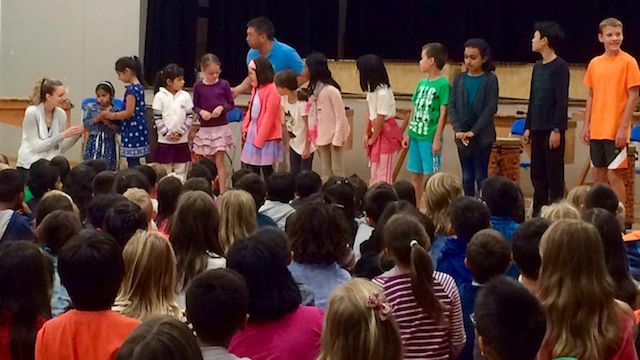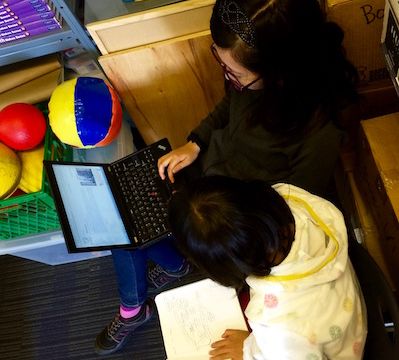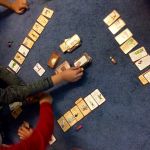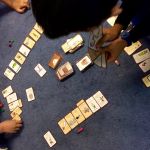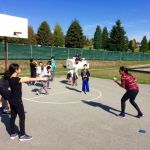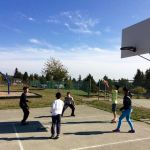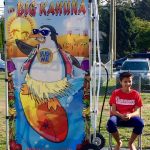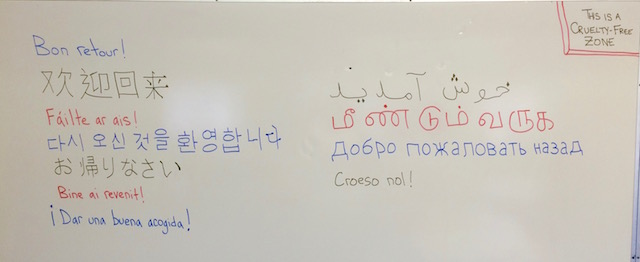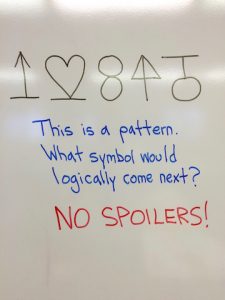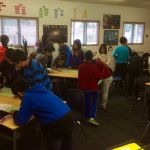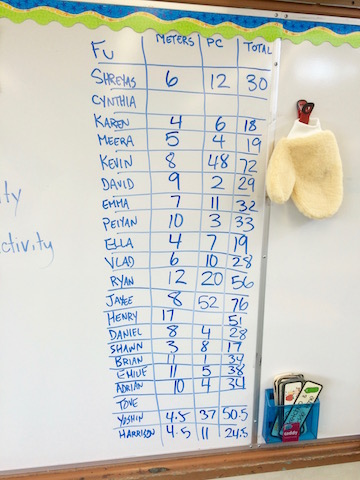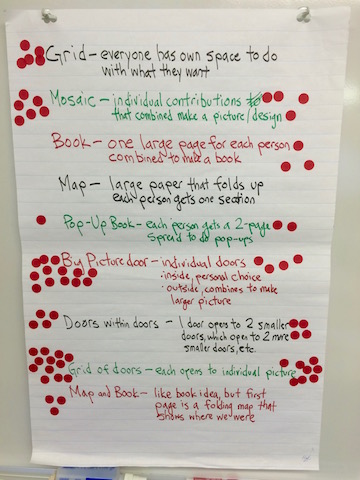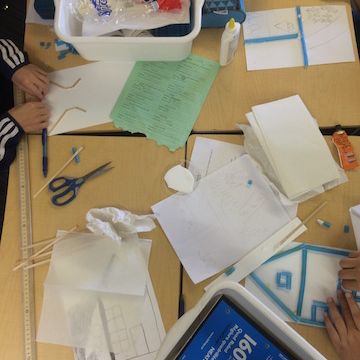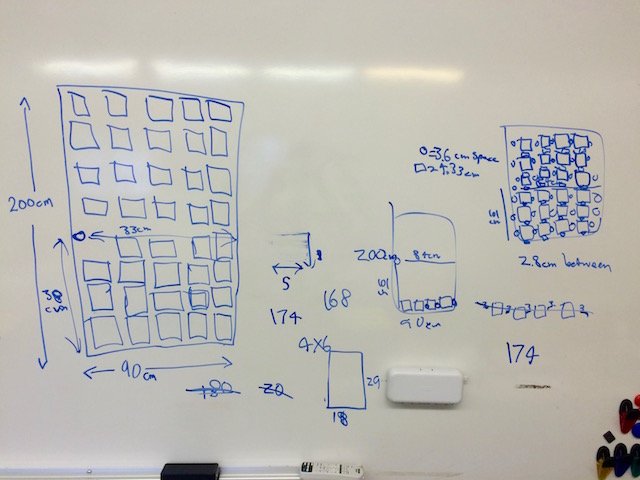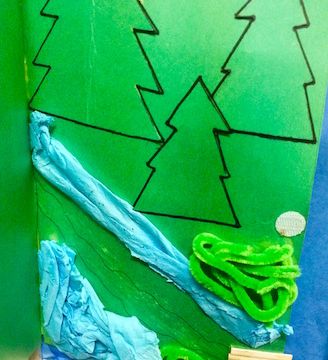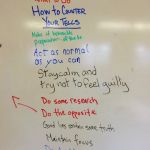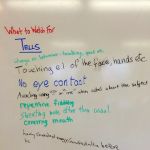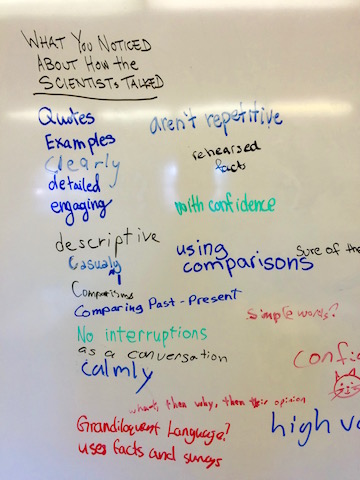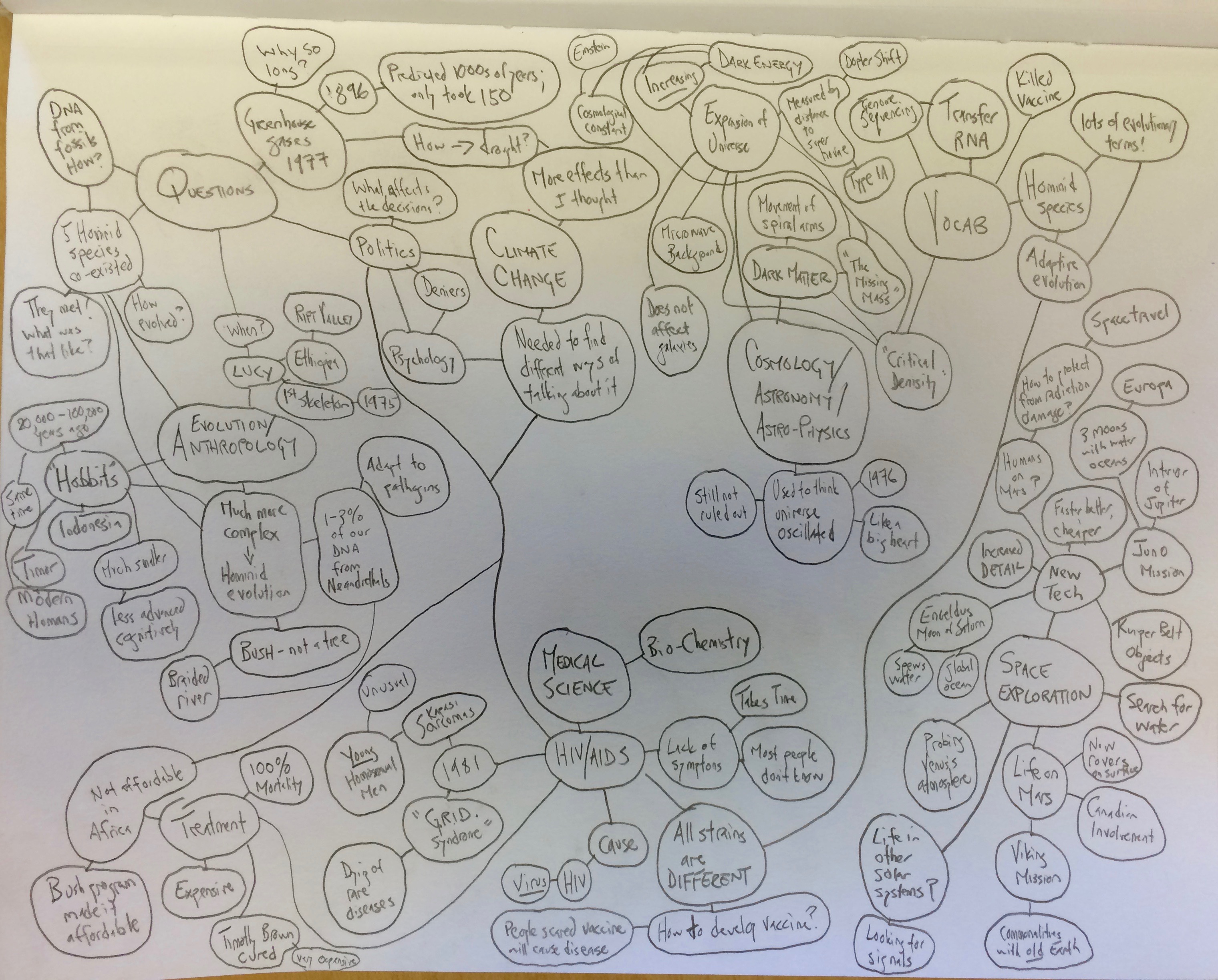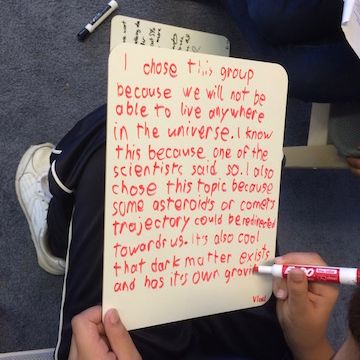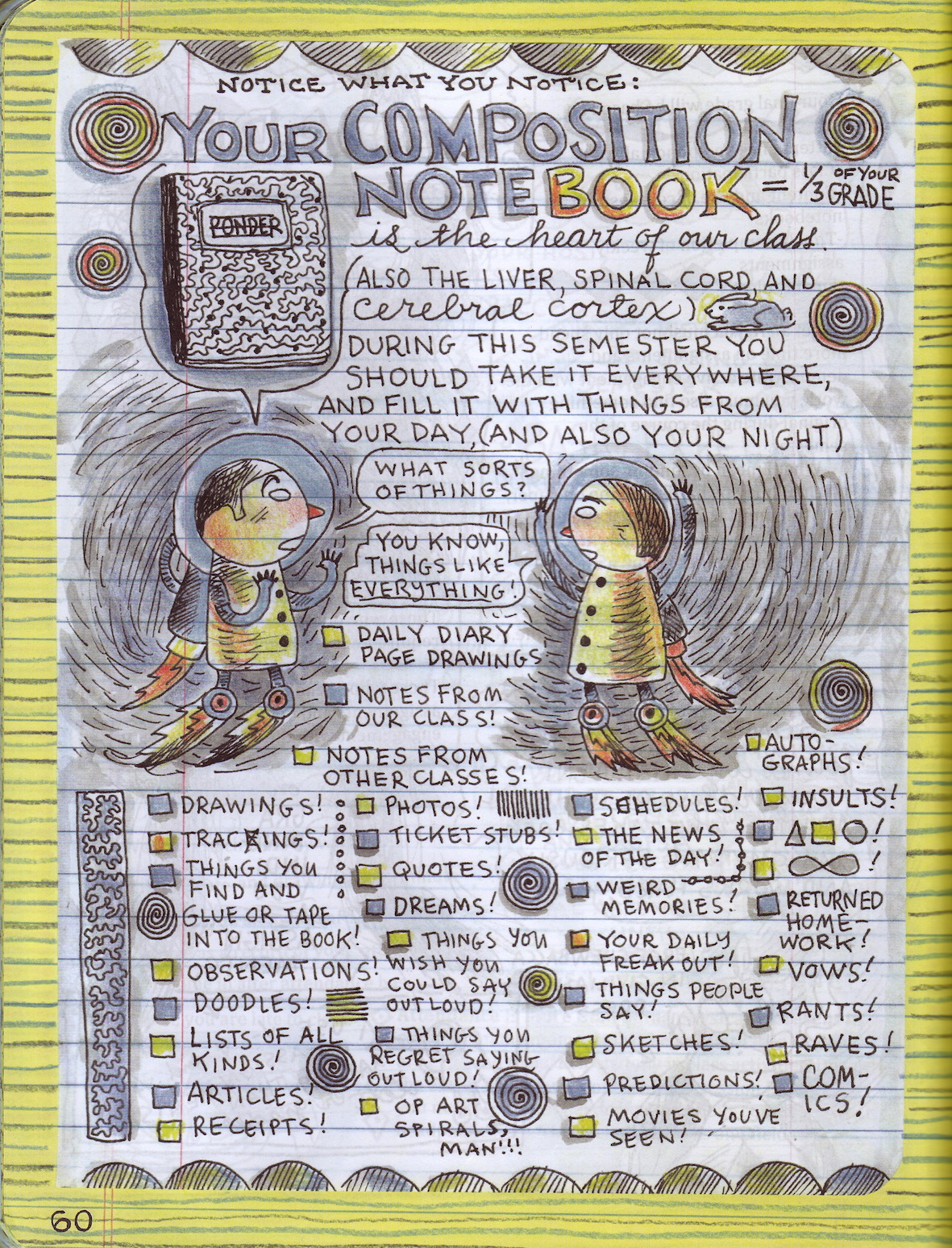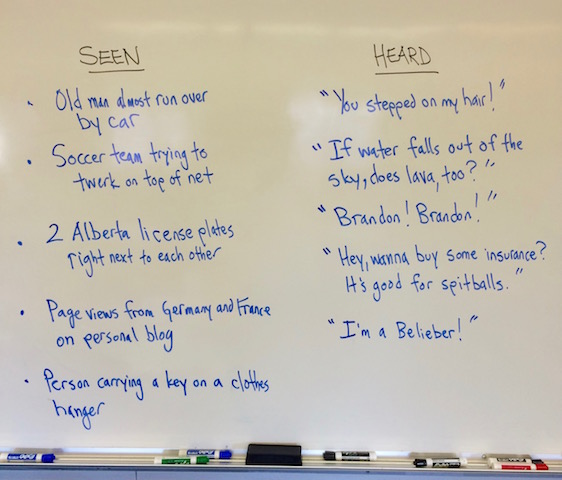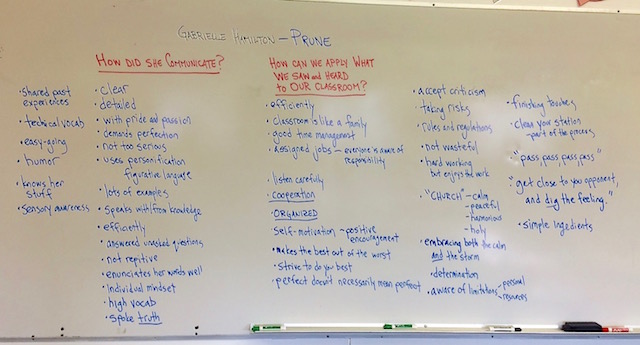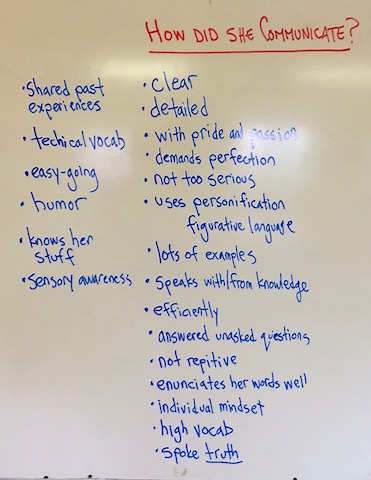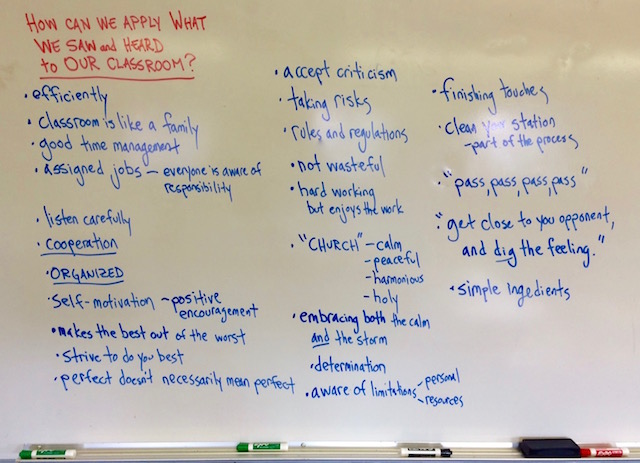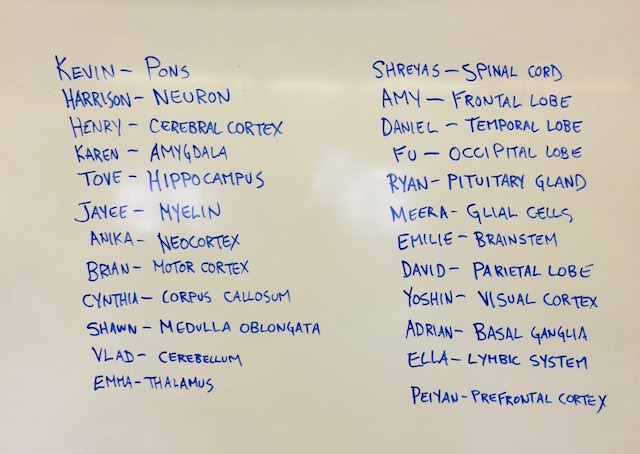So: weeks three and four. (It seems inconceivable that we have been together for almost a month – I’m still just trying to remember when the end of lunch bell rings…)
During these weeks, we have taken our first steps in exploring the kind of mind set that might be helpful for approaching our work and each other.
First, we learned about what is called the most important image ever taken: the Hubble Deep Space Field.
By looking at one tiny, unremarkable spot in the sky for eleven days, the Hubble Telescope was able to see galaxies – ten-thousand galaxies – in nothing: True-seeing as a result of not looking for quick answers but taking your time, looking in depth, and being still and focused.
Then, we found out what astrophysicist Dr. Neil Degrasse Tyson considers the most astounding fact about the universe, and we attempted to tie true-seeing to interconnectivity:
Next, we watched a short video about Bruce Lee and talked about his theories regarding martial arts and pliable awareness:
Although originally trained in Wing Chung (see below), Bruce Lee later developed a “formless form” of martial arts called Jeet Kune Do. Lee believed that it wasn’t enough to be a great fighter in one form or style. If you are specialized in kung fu or judo, and your opponent knows it, she or he will be able to anticipate your moves and therefore counter them and defeat you; but if you know kung fu and judo – and tae kwon do and karate and aikido and boxing and wrestling and fencing and ballet – you can adapt to whatever comes at you and stay calm and focused.
“Pliable awareness” is one of the basic tenets of jeet kune do. As the words suggest, this means being totally aware of everything that is going on around you, while at the same time resisting tension or rigidity, and instead remaining relaxed and flexible.
We did a little brainstorming about how to apply this in our work and interactions:
Finally, we learned about Wu Mei, the founder of the Wing Chun form of martial arts.
A member of the “Venerable Five,” the survivors of the massacre of the Shaolin temples by the Kangxi Emperor in late-17th and early-18th century China, Wu Mei was the holder of knowledge regarding the White Crane form of kung fu. While in hiding, she met a young girl, Wing Chun, who was being forced into marriage to a local gangster-type character. Wing Chun pled with Wu Mei to teach her kung fu, so that she could defeat her would-be betrothed, but Wu Mei felt that Wing Chun was too small to fully master the form and use it effectively. Instead, Wu Mei distilled the form into its most essential elements and taught these to Wing Chun, who – after A LOT OF PRACTICE – successfully took out her fiancé/stalker (not that I am advocating violence as a form of problem-solving…).
After watching the above clip from Kung Fu Wing Chun (2010), students studied and annotated the script, and we held our first Socratic Circle!
This form of engaging with a text was introduced to me by the incredible Mrs. Harris at Maywood Community School, who gave me the book Socratic Circles: Fostering critical and creative thinking in middle and high school, by Matt Copeland (Stenhouse Publishers: 2005).
A Socratic Circle can be seen as the opposite of a debate. In a Socratic Circle, students are involved in helping each other gain a thorough and nuanced understanding of a text, song, video, image, or concept. After carefully examining the chosen material and making note of unknown vocabulary, big ideas, and other criteria set by the teacher, the class arranges their desks in a circle and divides into two groups. Group One sits on the floor in the middle of the circle and engages in a dialogue about the chosen material. The goal is to build off each others’ ideas and create a communal understanding of the text. Group Two sits in the outer edge of the circle, at the desks, and watches and listens to the discussion, taking notes on the behaviours that they observe. After the discussion is over, Group Two gives Group One feedback on what they saw and heard. Then, the two groups switch places and repeat the process.
Even in just our first attempt, the Socratic Circle was a huge success. Students listened closely to each other, spoke respectfully and clearly, using evidence from the text to support their opinions. There were many connections made between the Wu Mei text and our previous learning about the Hubble Telescope, Bruce Lee, Neil Degrasse Tyson, our Brain Project, and even Gabrielle Hamilton’s “get close to your opponent and dig the feeling”(!). Students also made connections to group work and to their own lives and their involvement in activities ranging from dance to soccer to piano. It was a great synthesis of a lot of ideas. Thank you, Mrs. Harris!
One of our other big pieces of work was establishing our class agreement.
In an exercise adapted from the Co-Design process, developed by Stanley King and taught by Mr. King and Susan Chung, the students walked in to find a simple shoreline drawn on the whiteboard, with a background of mountains and a stand of trees. We imagined that we had come across this idyllic piece of land and made the decision to stay. One student said we needed a house, so I drew a house. This being MACC, other students noted that we needed a water supply and a quarry, so those were added to the drawing. As other students came up with other ideas, I passed the pen(s) off to them, and this happened:
Division Two Town: a fun place to visit but I wouldn’t want to stay there.
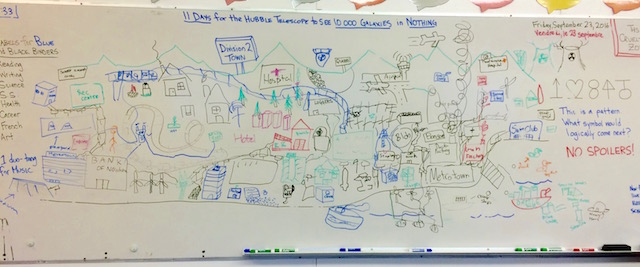
After this lesson in the nature of urban sprawl – what happens when people do whatever they want, wherever they want to do it – we went back to the drawing board to try to define what we wanted our classroom to feel like.
After voting on which of the ideas from “The Mind of a Chef” would be the most important to shaping our room, we create a list of “rules” that might be helpful.
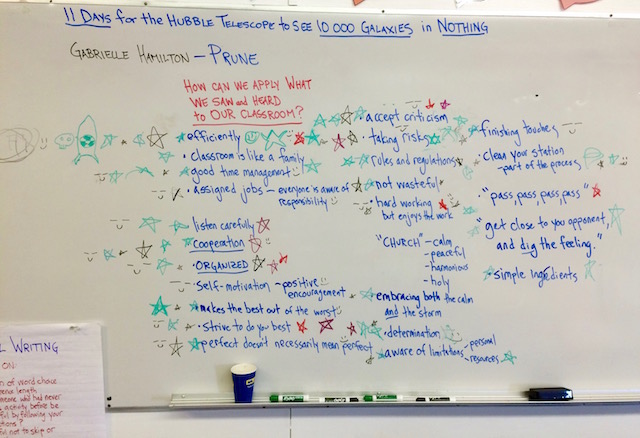

From there, students broke off into small groups to generate a list of their top five guidelines for a successful classroom, and then we voted to select the most popular
ideas.
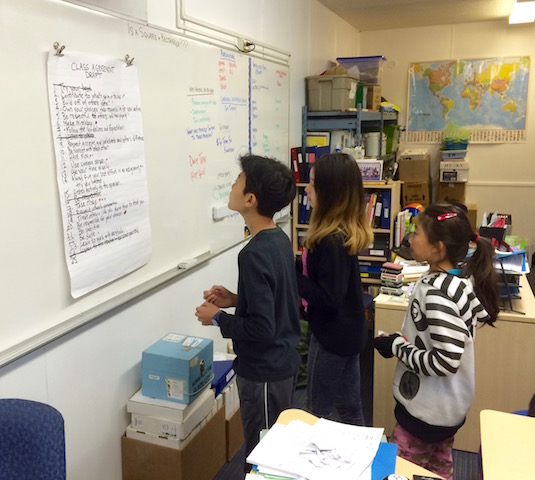
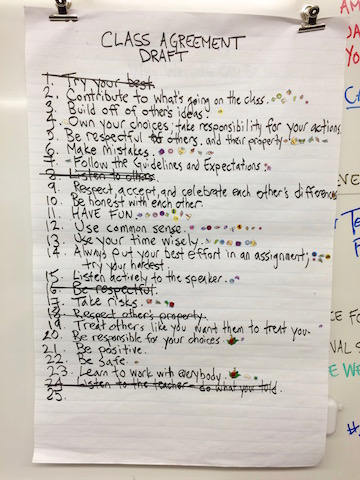
And we ended up with this:
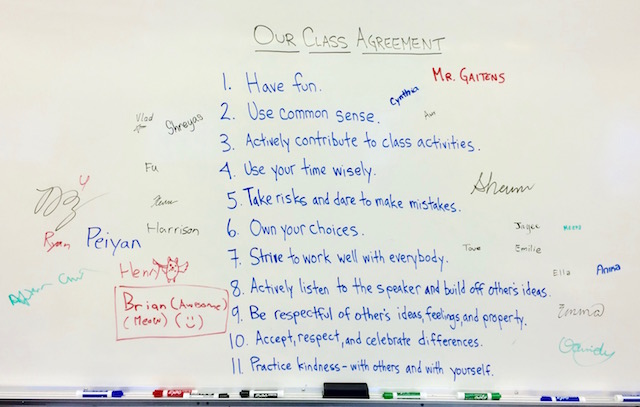
We may miss the art studio overlooking the graveyard, the duck factory, and our TWO nuclear power plants, but I have a feeling (or at least I hope!) these sensible, democratically produced guidelines will prove more effective in the long run.
Other highlights:
- Played Squirrels vs. Mountain Lions
- Worked on name plate art
- Got in the Popcorn Maker
- Had our third assembly in four weeks
- Began watching the U.S. presidential debate but realized we needed to do some research before we could fully understand what was going on
- During lunch, the kids have been teaching me how to play Munchkin
Which led to perhaps my favourite addition to our list of unexpected things overheard: “I ANNIHILATE your Tuba of Charm!!!”
- We cooperatively juggled
- Oh, and this happened:

